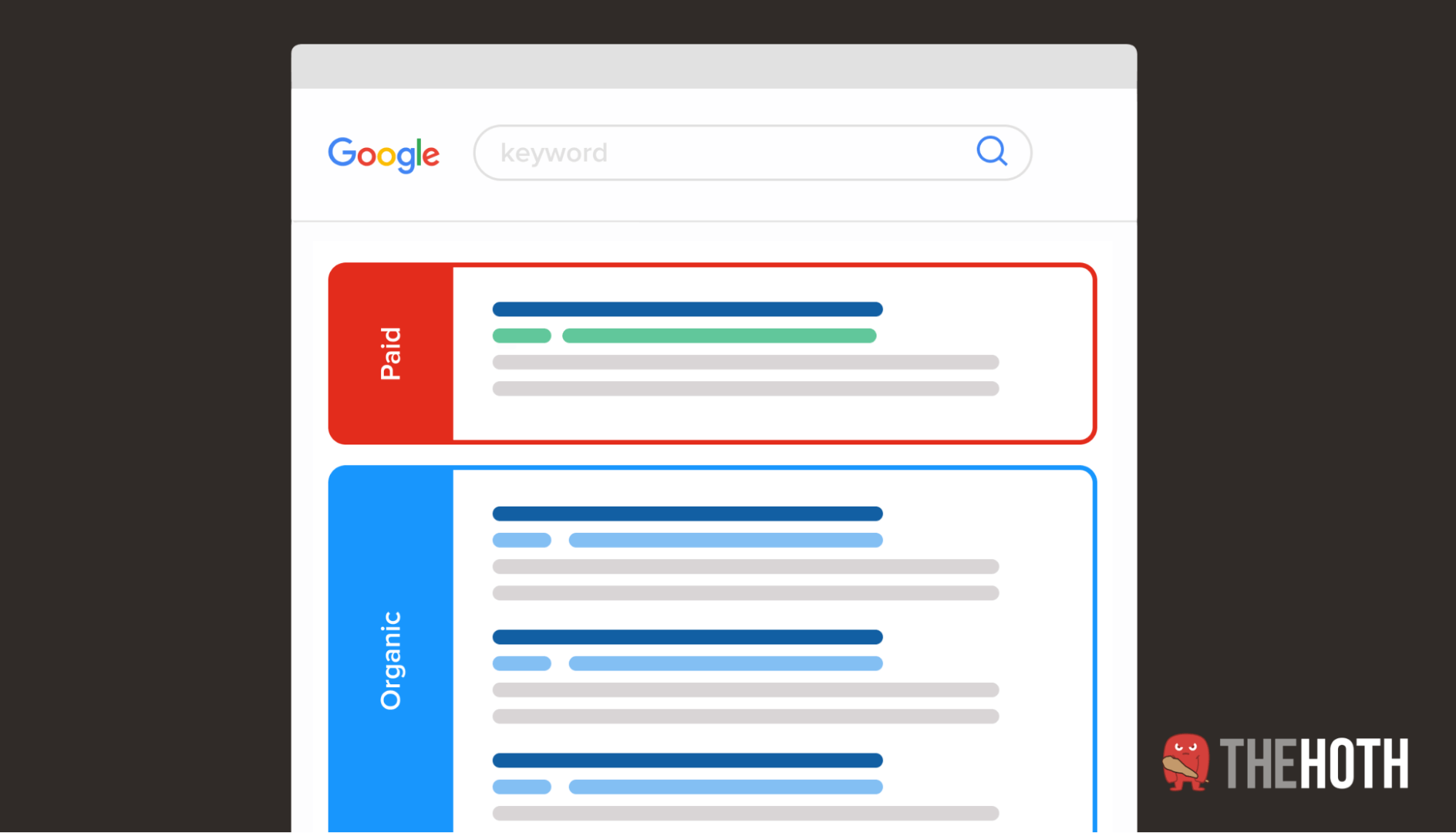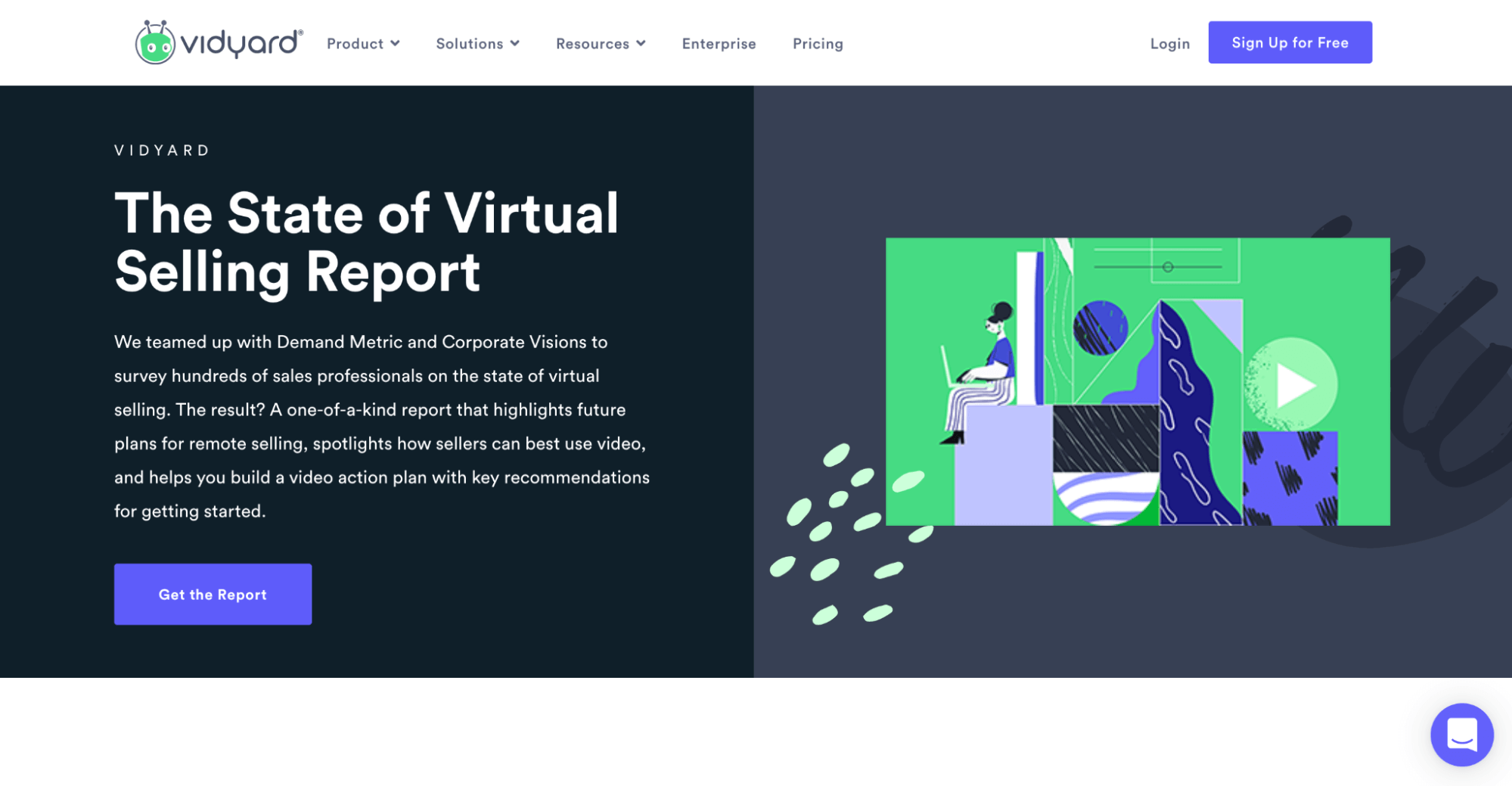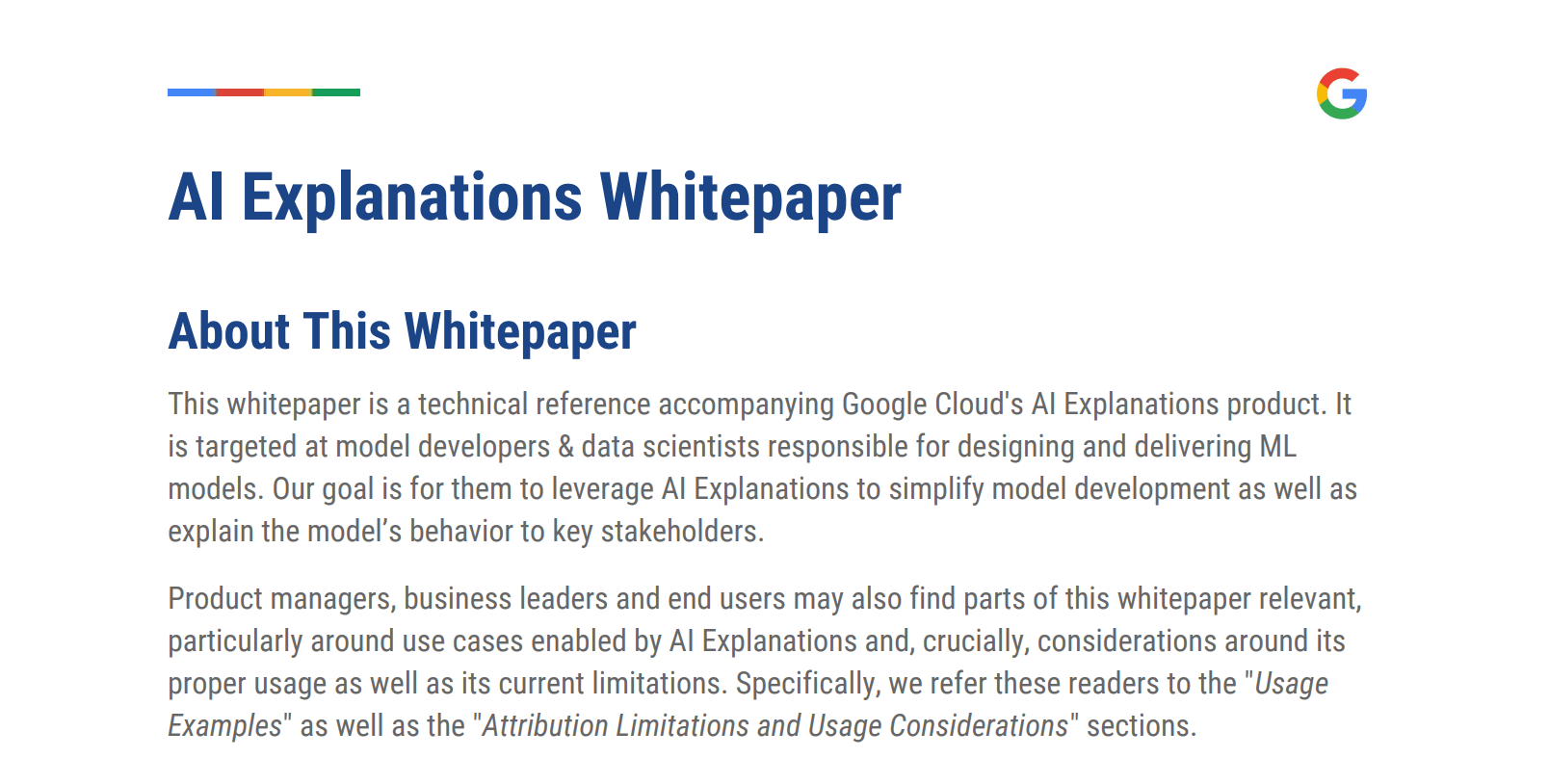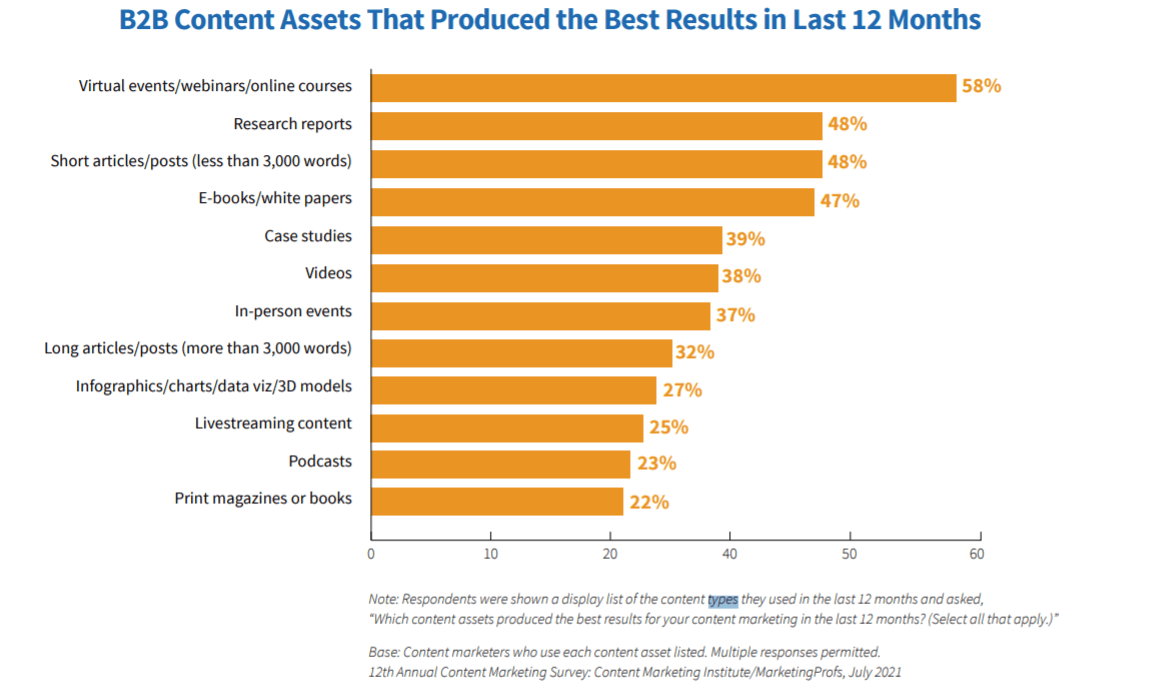Quick Links
Marketers often struggle to create content that drives results.
Creating compelling content is an art and a science. It’s more than just sharing relevant information with your readers — you’ve got to catch and keep their interest as well.
And on top of that, you must ensure posts are targeting relevant keywords, so they’re optimized for search engines too.
Too many companies get overwhelmed and churn out bland blog posts targeting random search phrases. To truly build a relationship with your audience, you need various content types in your strategy.
This post will cover the five content types that can help you drive more traffic, leads, and sales organically.
Before we dive in, let’s examine why content creation is a must-have for businesses in 2022.
The importance of engaging, optimized content in 2022
In 2022, every business should create engaging, optimized content targeting prospective customers.
More than 80% of B2B and 73% of B2C companies already have a content marketing strategy. But if you don’t, it can be hard to get started.
How can you create something that your customers want to read? What format should it be in? How can you reach customers with it? You should consider all these questions when attempting to make effective content.
Effective content will:
- Engage your prospective customers
- Educate them on your product or service
- Drive awareness, conversions, or sales
Producing the right content is the cornerstone of a demand generation strategy that actually works. If you optimize your content and publish it on the right channels, your target audience will find it and discover your business.
Top-of-funnel content attracts new customers to your business without the need to pay for targeted ad campaigns.
That brings us to the measurable benefits of content marketing today. 80% of companies drove increased brand awareness in 2021 using content marketing.
It also helped companies build trust, educate their audiences, nurture leads, and generate more demand.
When you create new content, you can promote it on all your digital marketing channels, including:
- Company blog and other web pages
- Social networks (like Facebook, Twitter, and LinkedIn)
- Apps
- Email lists
- Web push notifications
The better the content, the better the results from your campaigns. Compelling content is the foundation of a sound demand generation strategy, but you need to focus on the right kind of content.
Let’s explore five different content types we believe every company should have.
5 Content Types You Need Right Now
It can be overwhelming when you first begin to create content. You might have so much to say that you don’t know where to start. Or worse, you might not know what your customer base is seeking.
With your initial content strategy, focus on the types of content that you see successful competitors using. Then, assess what is resonating with your audience.
The five most effective content types are short-form, long-form, interactive content, video, and audio.
1. Short-form written content
When people think of content, they usually think of blog posts.
Blog posts are one of the simplest and most common types of content. Typically, a blog post is a casual article with featured images (and occasionally a video).
If you want a blog post to appear high up on search engine results pages (SERPs), you must do your keyword research and optimize it.
Once you get going, you can also invite noteworthy influencers and bloggers to write guest posts. Featuring experts can boost your credibility and expose the influencer’s audience to your brand.
To keep your writers on brand, give them checklists, templates, brand guidelines, and examples of your best posts.
Preparing to write
Luckily, creating compelling and useful blog posts isn’t too time-consuming. A blog post can quickly drive traffic and sales for your business with the right approach.
Before you write, always select a focus keyword. It’s the core topic that a blog post should cover and the search phrase you will focus on for your optimization.
If you have no clue how to write for search engines, software can help. You can tailor blog posts to focus keywords with search engine optimization (SEO) software like Clearscope, Ahrefs, or MarketMuse. They will guide your writing process to help you outcompete existing SERP content.
Tips for writing successful blog posts
Next, put together an outline of what you want to cover. Divide your blog up into multiple sections with subheaders. These secondary headings, known as H2s and H3s, are part of what search engines look for when scanning your content. Use your focus keyword in some of these H2s.
Most blog posts should be between 1,500 and 2,000 words. Of course, this is not a universal rule. Some can be shorter or longer. However, a word count of 1,500+ is usually enough to share valid insights with your audience.
Relevant advice that works is only a part of the equation. As you write, talk directly to your reader and don’t hide your humor or personality. That will make the blog feel more personal, helping you build relationships with your readers.
Finalizing your blog post
Finally, you should add multimedia, aka visuals, to your post. Use video clips, GIFs, images, screenshots, infographics, and more to make the post engaging. While the bulk of the post should be copy, you still want to add a few elements to engage the reader and keep them on the page.
Just take a look at this blog post. We use graphs, diagrams, and screenshots to back up our points and help you understand how to create better content.
The blog post isn’t finished yet, though. You still need to include elements that contribute to long-term demand generation. It can be an email capture form or a call-to-action (CTA) to sign-up for a free trial or download.
If your customers find the blog post via a search engine or a social media post, you want to capture their information to remarket to them in the future.
CTAs are a critical component of your content marketing strategy. They turn a blog post from just a piece of content into a lead-building tool that attracts subscribers on autopilot.
2. Long-form written content
Short-form content like blog posts can’t always conquer a Google Search. The difference between long-form vs. short-form content is both length and depth.
Long-form content includes guides, reports, and whitepapers that a prospective customer can download.
These content types go far beyond the scope of a standard blog post. They provide actionable, prescriptive directions and insights into a crucial topic.
Long-form content is an excellent lead generation tool that businesses can use to drive more sign-ups.
Let’s explore different types of long-form content and their benefits.
Reports and ebooks
Reports are long-form content pieces that often have multiple pages of information condensed into a PDF or interactive viewer.
Reports highlight specific insights about a particular topic, often sourced from the company’s own research and data. This type of content is crucial for positioning your company as a thought leader.
For example, Vidyard published a report called “The State of Virtual Selling,” highlighting new insights on virtual selling.
In the report, Vidyard shares how customers use its platform for virtual selling and position the company as a leader in the space.
In addition, since it was behind a “gate,” prospective customers had to provide their email to access the content. That way, Vidyard can reach them with promotional emails and more content.
Guides
Guides are similar to reports in that they are also multiple pages of useful instruction and information. Unlike reports, though, guides often provide step-by-step process documentation so the reader can replicate a tactic or strategy for their business.
For example, Hootsuite published a “Social Marketing Media Strategy” guide. This content asset offers instruction on how to use the right social media strategy for your business.
Guides help prospective customers deepen their understanding of a specific task or topic. Because the guides are so focused on one topic, it’s easy to optimize the content for a competitive keyword, improving your chance of ranking.
A great strategy is to link to guides from related blog posts to explain how to complete complex tasks.
Need help writing long-form content that appeals to both your audience and search engines? HOTH Blogger can help you revitalize your company blog with impactful guides and articles.
Whitepapers
Whitepapers combine the best of both guides and reports but consolidate the information into a one or two-page briefing.
Whitepapers are very targeted and typically involve the company sharing its perspective on the topic.
For example, this Google Cloud AI Explanations Whitepaper provides a deep dive into how AI and Google Cloud work:
You can summarize valuable information about your industry and company with a whitepaper.
Original research is also a part of any good backlink building strategy. It’s a lot easier to convince bloggers to cover your company when you have something newsworthy to share.
3. Interactive content
Sometimes content needs to be more engaging to keep the reader’s attention. That’s where interactive content comes into play.
By making your content more engaging, you can extend the time customers spend interacting with your brand.
Interactive content can boost your SEO rankings by increasing your website’s dwell time (how long someone spends on a page). It’s a crucial part of an effective SEO strategy.
Some popular types of interactive content include data visualizations, free apps, virtual events, webinars, and more.
Data visualizations
If your company aggregates useful data, it’s great to showcase it in a memorable way.
MVP, a social sponsorship valuation company, highlighted the average social brand value of the NHL season by the team’s performance.
To do so, it hosted an interactive data visualization on its website that allows users to hover over and interact with the dataset.
Interactive content keeps your readers engaged and active on your site for longer. Not only does that send strong SEO signals to Google, but it also increases your chance of landing a sale.
You can also build stronger relationships with your audience by interacting with them live.
Virtual events and webinars
Bring your prospective customers together by hosting a virtual event or a webinar.
These content assets are interactive experiences, but there is one major difference. In a virtual event, you need to show up while the event is live. A webinar invites you to do the same, but a recording is often available later.
Virtual events were actually the type of content that delivered the best results for B2B marketers in 2021.
HubSpot and Talkwalker co-hosted a webinar to highlight Social Media Trends for 2021:
Interested consumers could register and “save their seats” for the webinar. This approach lets both companies collect valuable leads for future remarketing.
Even though the webinar was in March 2021, the company still uses the recording to capture leads to this day.
4. Video Content
Consumers don’t always have the attention span to read long-form content. That’s why creating informative videos is another way to engage with followers.
Videos are also the perfect form of content to embed on a landing page. Why?
Video content can increase conversions. In fact, over 84% of people have purchased an item after watching a video about it.
There are many different types of videos. These include:
- Explainer video: A walk-through of the value of your product or service
- Demo video:Sharing the functionality of the product in a step-by-step process
- Brand video: Showcasing the company’s vision and mission
- Tutorial video:Walking through a specific use case on how to do a unique task
- Testimonial video: Highlight a customer’s success story, case study, or endorsement
- Talking head spokesperson video: Walking a customer through your company’s product/services and their benefits
For example, here is a talking head video for Digital DJs. The video explains how to become a better DJ in just seven easy steps:
This video helps aspiring DJs interested in honing their craft.
By tagging the video with relevant keywords on YouTube or Vimeo or embedding it to an optimized page on your site, consumers actively searching for related keywords will find the video and learn about your company.
With the right video, you can share valuable information about your company with a captivated audience. If you need help with high-quality video production, our team can help.
5. Audio Content
Does your target audience spend a lot of time listening to content? If so, audio content might be necessary.
A podcast is the standard approach. You can release pre-recorded podcast episodes on your site, Spotify, Apple Podcasts, and other networks.
A podcast is a great way to capitalize on the shifting media habits of your consumers. In 2021, more than 57% of Americans (a 2% increase from last year) subscribed to at least one podcast.
Podcasts let you connect with your audience while they are on the go. It’s also easier to get started with podcasts than it is with video since all you need is a quality microphone.
“How I Built This with Guy Raz” is a popular podcast about the stories behind companies. In the show, Guy interviews founders about the steps they took to bring their vision to life.
The show’s popularity skyrocketed due to the questions that Guy Raz asks his guests. The format is simple — just two people talking. From there, Guy can uncover insights from founders and share lessons on entrepreneurship with the world.
Your podcast doesn’t have to be spectacular. Instead, you can keep it simple and drill down on the conversations.
Figure out what you have to say and begin to record. From there, you can iterate based on audience feedback to find a formula that works.
If you want to experiment beyond podcasts, it’s also easy to start streaming radio digitally.
Conclusion
Investing in the right content types is important for your content strategy. Spending too much time on the wrong type of content for your audience or not diversifying your content library are two common errors companies make.
With a variety of different types of content published on your owned channels, you’ll be able to reach your audience in a handful of different, effective ways.
Don’t panic if you’re not quite sure how to do this. Our experts can help you grow your business with SEO, content, and PPC campaigns and an overall strategy to tie it all together. Schedule a call to reach new audiences and potential customers.






















I love the Hoth, such fantastic information on this blog and great tips which I’m going to use thankyou
Hey Alison,
Right back atcha 😉 Thanks for the comment!